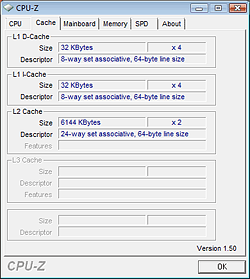Intel Core 2 Quad Q8200S and Q9550S 65W CPUs
Vital Signs, Cooling & Overclocking
As you saw on the previous page, the new S-series 65W Core 2 Quads aren't much different than the standard TDP models. It appears that they are simply specially binned parts which can operate at lower TDPs than normal. Their physical appearances and specifications both seem to suggest this, as they are no different from standard 95W TDP chips.


Intel Core 2 Quad S-series Top & Bottom
It is worth noting that these new chips are not meant to be replacements for the existing Core 2 Quads. According to Intel, the new S-series' primary purpose is to serve OEMs who may wish to use quad-cores in tight thermal applications like all-in-one PCs, where a standard quad would simply be too hot. A realitvely small number of S-series chips will be made available to the channel to eventually find their way into the inventory of your favorite computer shop. Availability at this time is a little spotty and you may need to do a bit of hunting if you want a S-series quad.
Unfortunately the lower TDP doesn't come for free, as there is a significant price premium attached. However if you were thinking about putting together a HTPC, SFF or any sort of system with very limited thermal characteristics, the new 65W quads are one of the best bets for a high performance quad-core solution to your low thermal envelope problem.


Intel Core 2 Quad Q9550S CPU-Z Details 

Intel Core 2 Quad Q8200S CPU-Z Details
A quick look at the CPU-Z details for the Q9550S and Q8200S confirms that these chips are identical to their standard 95W TDP cousins. However, what exactly does TDP mean to you?
|
So now that we have an idea of what the TDP rating represents, let's see how it translates into real-world metrics. We measured the temperature of the Q9550S and the Q8200S while idle as well as under load. For reference, we also measured the idle and load temperatures of a Core 2 Duo E8400 dual core processor. The E8400 is a 3.0Ghz chip with the 45nm Wolfdale core, a close cousin of the 45nm Yorkfield core used by the S-series chips. Like all Core 2 Duo chips, the E8400 also rated for a TDP of 65W.
All measurements were made with the Everest utility and double-checked using the Core Temp utility. Processor loading was performed using the Everest burn-in test. The processors were cooled by a Silverstone NT-06 air cooler with the stock fan set to 900RPM.

It seems the low TDP of the new S-series quads isn't just for show. Both the Q9550S and the Q8200S operated at impressively low temperatures. Especially surprising is how close the quad-cores are to the dual-core E8400, despite having double the number of transistors. The Q8200S actually ran cooler than the dual-core E8400 while under load. The Q9550S was the hottest running of the bunch but not by much, it still manages to stay in the same general vacinity as the E8400.
|

Intel Core 2 Quad Q9550S Overclocked to 3.825GHz

Intel Core 2 Quad Q8200S Overclocked to 3.29GHz
We're sure you are wondering if these new quad chips overclock any better than the standard 95W TDP models, so we put them through a quick round of overclocking. All overclocking was performed with the Intel stock cooler and at stock voltage.
We were able to take the Q9550S from its stock frequency of 2.83Ghz at the stock FSB of 333MHz up to a maximum stable overclock of 3.825GHz with an FSB of 450MHz. We took the Q8200S up to 3.29Ghz with an FSB of 470MHz, from its stock clock frequency of 2.33Ghz. It's worth noting that the test bed we used is known to be capable of reaching a stable FSB of 490, so our overclocking results were not bottlenecked by the system board itself.
Overclocking the new S-series quads didn't give the results we were hoping for. Unfortunately the lower thermal envelope didn't quite translate into higher overclocks. Both of our samples overclocked about 1GHz over their stock frequency. This is roughly on par with other Core 2 Quad chips we have seen in the past. However, as is always the case with overclocking, results will vary from chip to chip and your experiences may vary, but it doesn't seem like the new chips are any more adept at overclocking than traditional 45nm Core 2 Quads.






